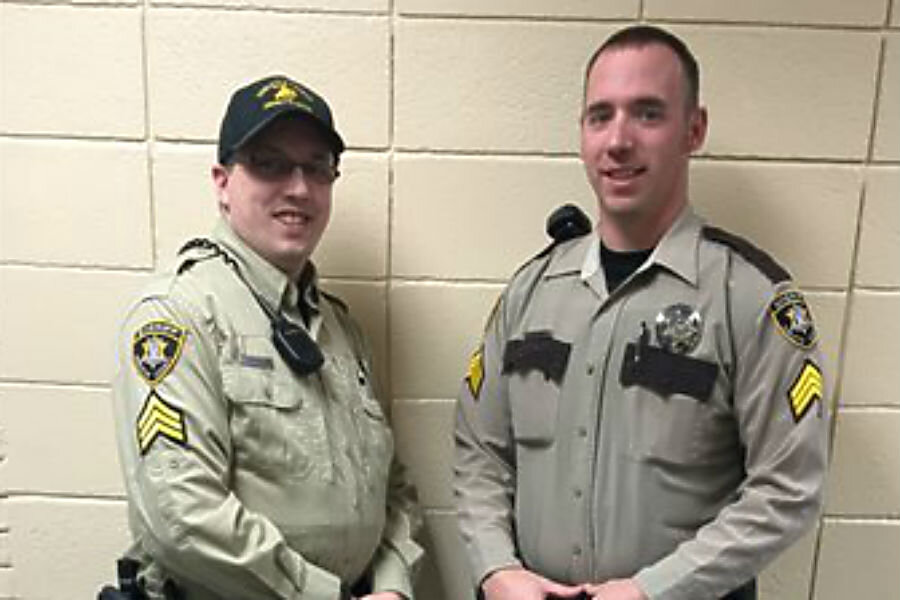Why a Wyoming sheriff banned cowboy boots and hats
Loading...
| Pinedale, Wyo.
The new sheriff of a Wyoming county has banned his deputies from wearing cowboy hats and cowboy boots, a change that led one longtime deputy to retire rather than give up his Western attire.
Sublette County Sheriff Stephen Haskell imposed the new dress code in the western Wyoming county that includes Pinedale, which True West magazine recently named a true Western town.
Haskell is requiring deputies to wear black trousers, a tan shirt, black boots and a black ball cap, saying the change is for safety and uniformity.
"I'm very much for the Western way of life and the look. And that's the way I dress," Haskell told the Casper Star-Tribune. "However, for a professional outfit ... I like everybody to look the same. We are one team unified in one purpose. That is to do our job."
Haskell, 53, who has worked in law enforcement for three years, also argues that cowboy boots are slippery on ice and cowboy hats can blow away in Wyoming's blustery wind. He also said a hodge podge of uniforms made the department look like a Skittles platoonl. “I had my patrol deputies wearing one uniform, (and) I had detention wearing another uniform. It looked like the Skittles platoon,” said Haskel“We had a rainbow of colors. Who the heck is who?”
The change led Deputy Gene Bryson to retire last Friday after 28 years with the department and about 40 years total in law enforcement. His uniform included a brown cowboy hat, brown cowboy boots and a leather vest in the summer or a wool vest in the winter.
The uniform change is "kind of the reason why I retired," Bryson told the newspaper. "I am not going to change. I've been here for 40-odd years in the sheriff's office, and I'm not going to go out and buy combat boots and throw my vest and hat away and say, 'This is the new me.' "
Bryson was born and raised on a ranch in Montana and has worked on ranches in Colorado and Wyoming. He went into law enforcement in 1974.
"And I've had a cowboy hat on since 19 — I don't know," Bryson said. "That's what looks good to me in the sheriff's department. It's Western. It's Wyoming."
The Casper Star Tribune notes that Haskel was also raised in Wyoming. He served in the Marine Corps and was a semiprofessional bull rider and bareback rider for seven years. On the wall of his office is the Cowboy Code of the West.
“I’m very much for the Western way of life and the look. And that’s the way I dress,” Haskell said. “However, for a professional outfit -- and this also goes for my 25 years in the Marine Corps -- I like everybody to look the same. We are one team unified in one purpose. That is to do our job.”





